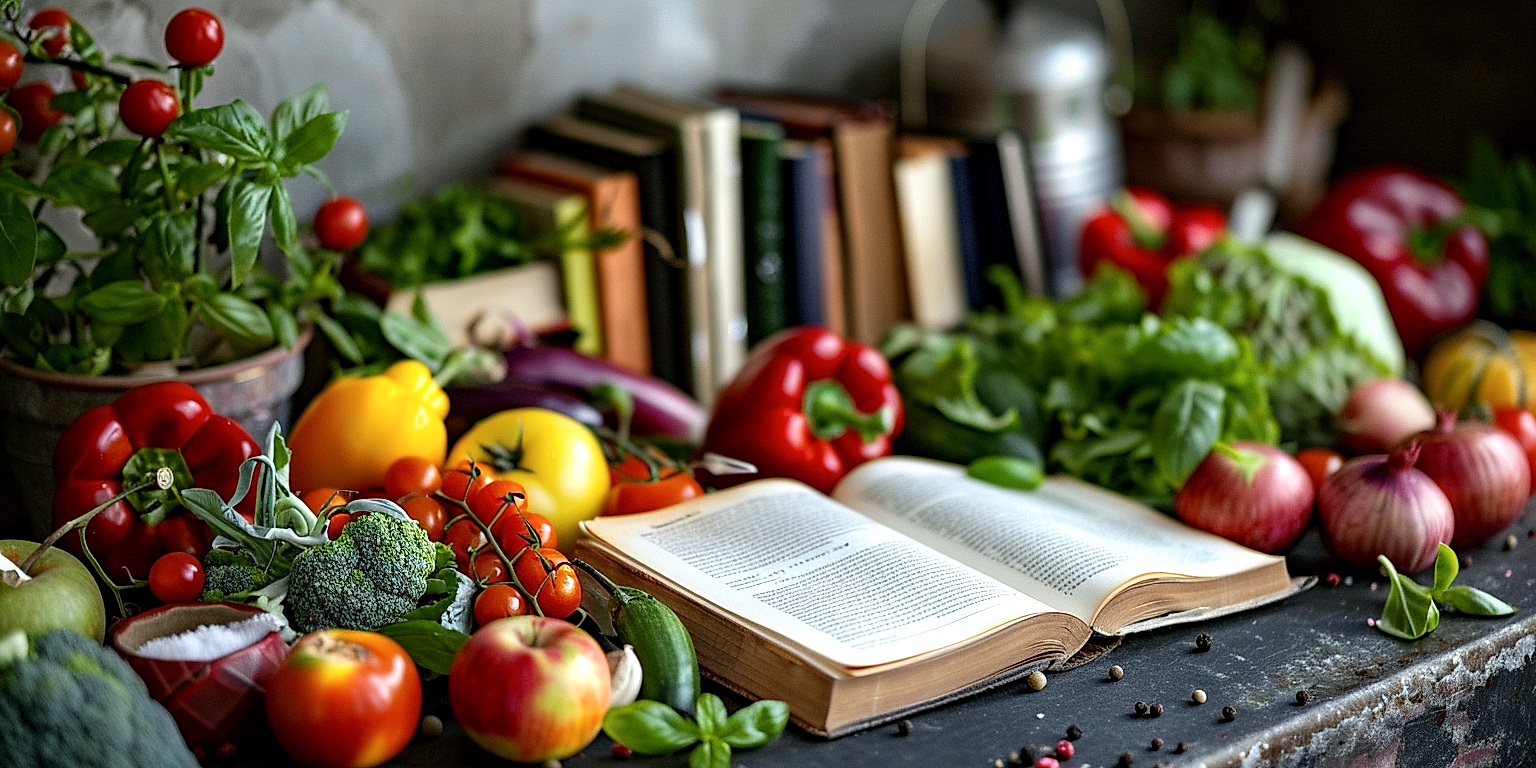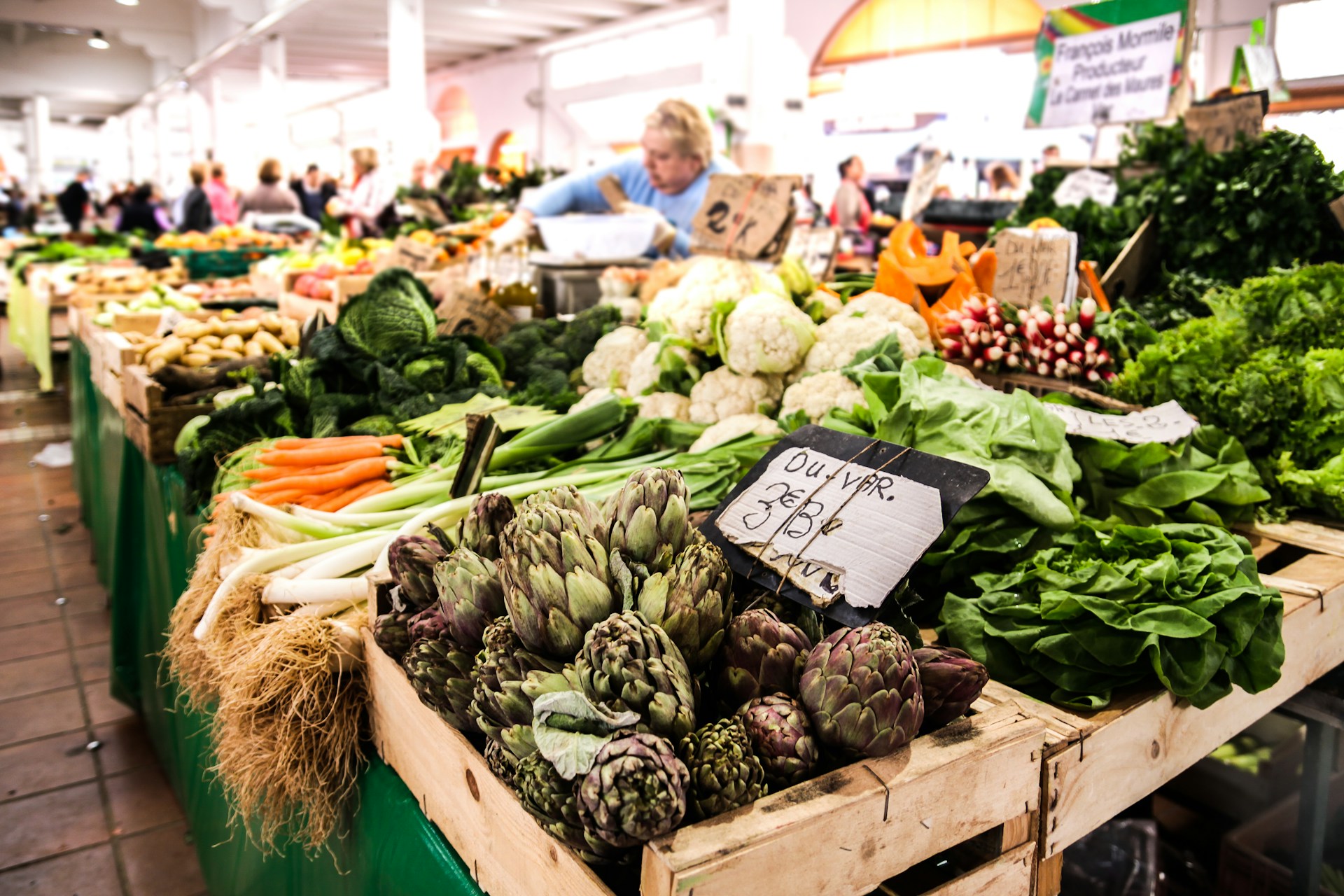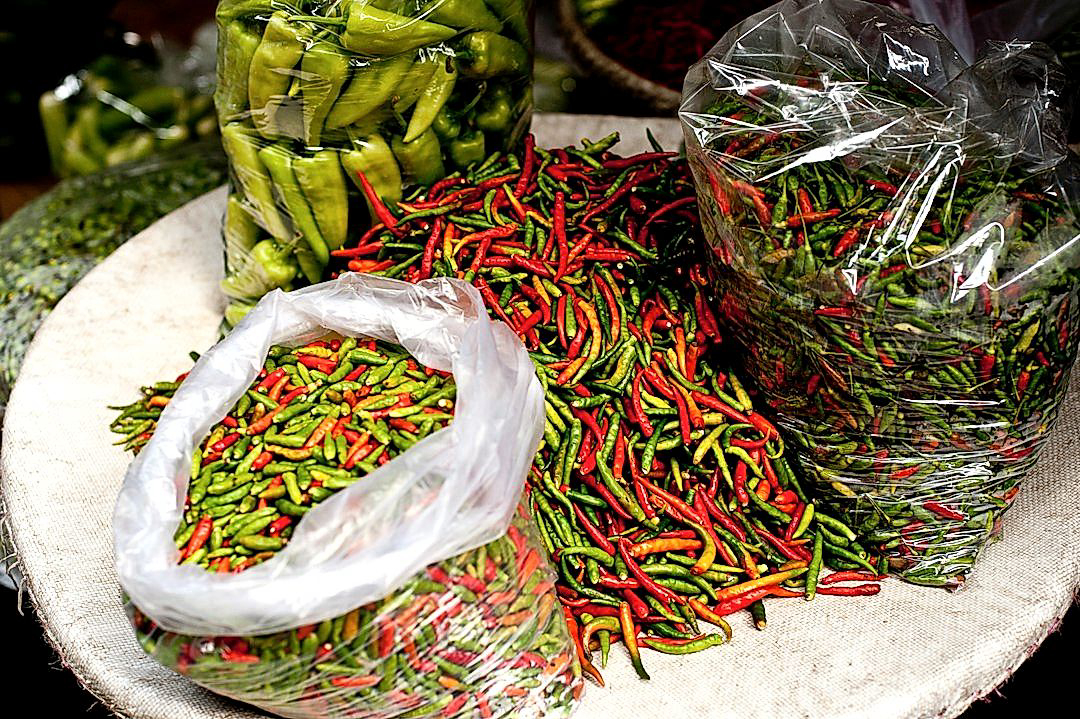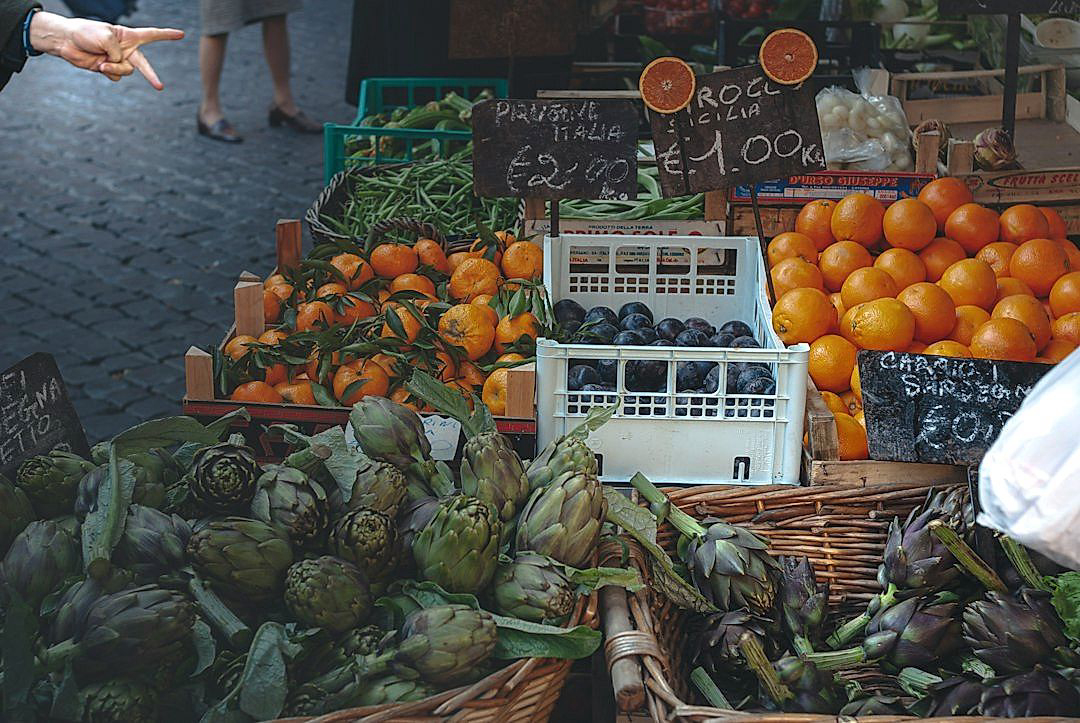With the growing focus on customer experience in the retail industry, produce merchandising stands as a critical element in ensuring customer engagement.
This attention isn’t unwarranted, as exceptional merchandising can result in increased brand loyalty and sales.
Every touchpoint with customers, no matter how infinitesimal, should strategically elevate their engagement and drive purchases.
However, designing meaningful strategies for engagement can be an arduous task.
One must be cognizant of the constant evolution of consumer behavior and expectations.
It is vital to understand that effective produce merchandising isn’t just about aesthetics or layout, but more about providing a superior and tailored shopping experience.
Contents
- Customer Engagement Strategies Through Produce Merchandising
- 1. Display a Variety of Fresh and Colorful Products
- 2. Create interactive sampling or tasting stations.
- 3. Organize Produce by Categories for Ease of Shopping
- 4. Incorporate seasonally relevant and locally sourced products.
- 5. Use attractive, informative signage and labels.
- 6. Regularly rotate stock to maintain freshness.
- 7. Provide recipes and tips related to featured produce.
- The Bottom Line
Customer Engagement Strategies Through Produce Merchandising
1. Display a Variety of Fresh and Colorful Products
When it comes to merchandising in a produce department, one of the key aspects of customer engagement is the display of a variety of fresh and colorful products.
One of the most effective ways to draw attention to the product range is to create a display that is visually appealing.
The colors of the fruits and vegetables can be utilized strategically to create a stunning visual effect.
For example, contrasting colors can be placed next to each other to make the display more striking.
At the same time, the idea is not just to create a beautiful display, but also to showcase the freshness and quality of the products.
This can be done by ensuring that all the products displayed look fresh and vibrant.
Rotting or discolored fruits and vegetables can send a negative message to the customers about the quality of the products in the store.
Thus, diligent monitoring and maintenance of the product displays become key in this regard. Regular replenishment of stocks to ensure that only the freshest ones are on display is crucial.
Another important tip in this context is to use the height and depth of the display area effectively.
This means ensuring that the products are not only presented in a visually appealing manner but are also easy to reach and select.
Overfilling the display with products may create an impression of abundance, but it can also deter customers if the products at the bottom get squashed or those at the back seem inaccessible.
Therefore, the key here is to strike a balance. Display an abundant variety of fresh and colorful fruits and vegetables, but do so smartly and practically.
Overall, the product display can be a potent tool in engaging customers. An enticing display can attract more customers and encourage impulse buying.
So, the way the products are presented can have a significant impact on the customers’ shopping experience and their perception of the store’s offerings.
Ultimately, a well-displayed variety of fresh and colorful produce can significantly enhance customer engagement and positively impact sales.
2. Create interactive sampling or tasting stations.
Interactive sampling or tasting stations are an exceptional way to draw customers into engaging with the range of products available in your store.
Not only do these stations allow potential consumers to try out different produce options, they also provide an opportunity for an interactive experience that can greatly enhance the shopping journey.
The taste, smell, and appearance of fresh produce is often enough to convince customers of their quality and make an instant purchase.
This way, businesses can generate immediate sales and possibly even higher spending in the long run as customers are more likely to return for products they know and like.
Moreover, tasting stations also have the potential to introduce shoppers to unique or unfamiliar products that they might not have considered buying.
It is also a chance for staff to engage directly with customers, answering questions or providing additional product information.
A face-to-face interaction builds trust and a sense of community between the business and its customers, aiding in rerouting customer loyalty.
Furthermore, remind your staff members to share relevant information about the source of your products, the suitable cooking methods, and potential health benefits.
This could heighten awareness and appreciation for high-quality, locally-sourced produce, which in turn, could motivate customers to make sustainable and health-conscious choices.
To make the tasting stations more effective, consider frequently changing the featured products to create a sense of excitement and novelty.
This also provides a chance to highlight seasonal fruits and vegetables, catching customers’ attention with fresh, new options to try each time they visit.
Remember to maintain sanitary practices at these stations, as cleanliness is particularly important when offering customers food to sample.
Plan for special occasions or holiday seasons where you can offer themed-tasting stations that celebrate the particular time of the year.
This can create a sense of festivity and convince customers to try recipes or ingredients they may not have previously considered.
In general, the goal of implementing interactive sampling or tasting stations is to build a memorable shopping experience that puts your customers’ needs, interests, and tastes at the forefront.
The direct engagement and personal touch through these tastings can highly contribute to enhancing customer satisfaction and creating a loyal customer base for your produce business.
3. Organize Produce by Categories for Ease of Shopping
Customers appreciate an organized and well-structured produce department. It enables them to navigate the section easily, thereby enhancing their shopping experience.
The placement of products is a direct contributor to customer engagement and satisfaction. It is imperative to pay careful attention to how you organize your goods.
Following a categorization system, such as grouping similar items, will allow customers to quickly and effortlessly locate what they’re looking for. This can drastically reduce confusion and frustration, leading to a more positive overall shopping experience.
Produce can be grouped in various ways. It can be sorted by type, color, region of origin, or any other feature that makes sense to your customers. The key is to make your organization system as intuitive as possible.
For example, it can be practical to place all citrus fruits in one area, root vegetables in another, and so on. This kind of structural design encourages customers to not only find their regular purchases with ease but also to explore other produce options within the same category.
Effective categorization doesn’t only streamline shopping. It can also inspire customers to try different items they would otherwise overlook.
Specialty or uncommon products must be given considerable visibility. Placing them nearby related items can garner increased attention. This allows for customers to get acquainted with new products, driving product discovery, and possibly, sales.
Categorization is also an opportunity to promote local or seasonal items. Displaying local produce within their distinct sections creates an appeal for consumers who value locally sourced food. Similarly, showcasing seasonal items together not only eases shopping but also creates a sense of urgency to purchase before the season ends.
An organized produce department isn’t just about aesthetics. It has a direct impact on your customers’ shopping behavior and satisfaction. It is a silent guide that steers customers throughout their shopping journey.
Moreover, a well-planned produce section can drastically reduce the time customers spend searching for their desired items. This can result in an increase in customer throughput, which is essential for businesses, especially during peak hours.
Remember, an organized produce section makes shopping more enjoyable and less time-consuming. This is a key aspect of positive customer engagement.
Being intentional about product organization can not only enhance the shopping experience but also contribute to greater sales and profitability. It can encourage customers to explore new flavours, support locally sourced produce, and cultivate a loyal customer base.
In essence, the organization of produce is not just a merchandising tactic, but a multi-faceted strategy that, when done right, can foster customer engagement and business growth.
4. Incorporate seasonally relevant and locally sourced products.
One efficient strategy in produce merchandising that promotes customer engagement involves catering to the changing needs and desires of shoppers by providing them with seasonally relevant and locally sourced products.
To illustrate, offering fresh tropical fruits in the summer or squash and root vegetables in the winter can add a sense of freshness and relevance to your merchandise.
At the same time, it can encourage customers to experiment with new recipes or try out variations of their tried and tested favorites, thereby promoting more sales.
Finding ways to highlight the seasonal aspect of your produce can create a sense of urgency and excitement, which can drive customers to make a purchase.
Moreover, incorporating locally sourced produce can also enhance customer engagement by promoting a sense of community and sustainability.
Supporting local farmers and gardeners by displaying their products underlines the commitment of the business to environmental sustainability, which is an important value for many modern customers.
Not only does this support the local economy, but it also provides customers with the freshest produce available.
Furthermore, locally sourced products often have that unique taste and quality that mass-produced items cannot replicate, reinforcing why they can stand out in your merchandise.
The inclusion of seasonally relevant and locally sourced products in your merchandising mix can inspire customers to revisit your store regularly, fostering a deeper connection with your brand.
Another advantage is that you can promote these seasonal and local items through special in-store events or sampling stations, further enhancing customer engagement.
Sharing the story behind each local product, perhaps through eye-catching signage or staff members who are well-informed about the product, could also help to foster a deeper relationship and trust between the customer and your brand.
This builds a strong narrative that can appeal to customers’ emotions, further motivating them to purchase your products.
Finally, it’s important to consider the possibility of creating promotions or discounts related to these seasonally relevant, locally sourced products to generate even greater customer interest and excitement.
Given these factors, incorporating seasonally relevant and locally sourced products can be an innovative and successful merchandising strategy to enhance your customer engagement efforts.
5. Use attractive, informative signage and labels.
When it comes to customer engagement strategies through produce merchandising, the use of attractive, informative signage and labels is key.
Well-designed signage can greatly enhance a shopper’s experience by making it easy to navigate various sections within the produce department.
The color, font, and design of your signage should be appealing and eye-catching, capable of drawing customers in and retaining their attention.
Apart from being visually appealing, signage should also be informative and accurate, offering essential details about the products such as variety, origin, health benefits, and price.
As a merchandising strategy, providing comprehensive information on signage and labels can reinforce a transparent relationship with customers by making them feel informed about their purchases.
Labels, similar to signage, can serve as an educational tool for customers, providing additional details such as nutrition facts, usage ideas, or recipes, thereby promoting customer interaction.
Implementing labels with QR codes that customers can scan to learn more about the product, its production process, and the farmer who grew it can be an innovative enhancement to traditional labelling.
Furthermore, highlighting key selling points like organic certification, locally-sourced, or pesticide-free, can distinguish your products and resonate with customers who prioritize these values.
Special promotions, discounts, and deals can also be prominently featured on signage and labels to stimulate impulse buying and enhance customer engagement.
Exhibiting bilingual or multilingual signage and labels can be a tremendous strategy for catering to a diverse customer base, making everyone feel welcome and included.
Where placement is concerned, signs should be strategically located at a customer’s eye level for visibility, and labels should be easily readable without disrupting the presentation of the products.
Through routine updates, regular maintenance, and rotation of signage, you can ensure freshness and relevance, thereby maintaining customer interest over time.
Lastly, remember that the primary function of signage and labels is to deliver information; hence it should always be clear, concise and easy to understand.
Enlisting the help of a professional designer for your produce signage and labels can ensure they are visually appealing, informative, and effective in engaging customers.
Indeed, the way you present information about your produce through signage and labels can play a crucial role in enhancing customer engagement and their overall shopping experience.
6. Regularly rotate stock to maintain freshness.
One of the most vital aspects of successful produce merchandising is ensuring the regular rotation of stock to maintain freshness.
This is a fundamental best practice in fresh produce retail, as the longevity of items is relatively short compared to most other store commodities.
To keep your products as fresh as possible, it is essential to implement a ‘first in, first out’ approach in your store.
This means that the produce that has been in stock longer should be sold first, guaranteeing that the items sold to customers are as fresh as possible.
By practicing this rotation method, not only are you able to offer your customers superior quality products, but you also reduce the risk of having to discard expired or spoilage products, which can significantly impact your profit margins.
It is important to remember that customers often judge the entire quality of a store by the freshness and quality of its produce section.
If they consistently find fresh, ripe, and flavorful products, they will feel confident in their shopping experience and more likely to become repeat shoppers.
Regular stock rotation also presents an opportunity to inspect the produce for any signs of spoilage or damage.
Remember, even a single spoiled apple can impact the freshness and overall appearance of your produce, deterring customers and negatively impacting sales.
Therefore, constant inventory rotation is key to maintaining a healthy, enticing produce display.
Regular rotation also allows you to monitor sales and take note of any trends or preferences.
Perhaps certain items are popular during a particular month or there is a continual demand for specific locally sourced produce – these observations can guide future purchasing decisions, stock amounts, and strategic product placement in your store.
In the ever-changing world of produce retail, maintaining a cycle of freshness through regular stock rotation is an important strategy for building customer trust and engagement.
It ensures that you always have the best possible products on offer, which ultimately enhances your store’s image and reputation.
By giving the utmost importance to freshness, stores can significantly elevate their customer engagement, fostering a more fruitful relationship with shoppers that can lead to increased sales and business success.
Offering recipes and tips related to the produce being sold not only helps to promote the product but also creates an engaging experience for customers.
By doing so, customers are given ideas and encouraged to try out new dishes, enhancing their overall shopping experience.
By sharing recipes and tips, stores also position themselves as trusted sources of information and experts on the featured produce item.
It’s an opportunity to showcase the versatility of a fruit or vegetable, especially if it’s a lesser-known or uncommon product.
Showcasing how to use these items in different preparation methods, cooking techniques, or different meal courses can broach new horizons for customers.
Recipes could be placed close to the produce, perhaps on a display stand, or even as a handout to customers.
Another great idea could be to provide live demonstrations of easy-to-make dishes using the featured produce.
This can be done in-store or, if resources allow, through virtual cooking classes or online video recipes.
Further, providing health benefits, suggested pairings with other ingredients, and storage methods are valuable tips that customers would appreciate.
In line with the digital age, QR codes can be used to provide a link for customers to access all the recipes and additional information online.
And, it’s a good practice to frequently update the shared recipes to keep the content fresh and engaging.
Implementing this strategy can be an effective way to drive customer interest in the produce section of the store.
Also, this approach aids in reducing food waste, as customers would be enlightened on how to use every part of the produce or how to use leftover produce in new recipes.
This strategy of providing recipes and tips related to featured produce serves double-duty, driving sales while simultaneously driving customer satisfaction and loyalty.
The more information and ideas you can provide about your products, the more likely your customers are to engage with the produce and make a purchase.
Remember, the goal is to inspire your customers with your products, and therefore ensure they return again and again.
The Bottom Line
Maintaining a vibrant retail produce section requires a blend of strategies, all geared towards enticing and educating shoppers.
By providing a wide range of fresh and vividly colorful products, retailers can immediately captivate customers’ senses.
The interactive elements, such as sampling stations, further enhance the shopping experience, taking it beyond a simple transaction to become more engaging.
Equally, the smart organization of products and attractive signage present a user-friendly setup that promotes ease of shopping.
Seasonal relevance and local sourcing not only boost the appeal of the produce but also embed sustainability into the business model.
Through the constant rotation of stock, freshness becomes a unique selling point that adds value to the overall retail offering.
Enriched with the provision of relevant recipes and tips, the produce section transforms into an educational hub, inspiring customers to explore different produce and cooking techniques.




